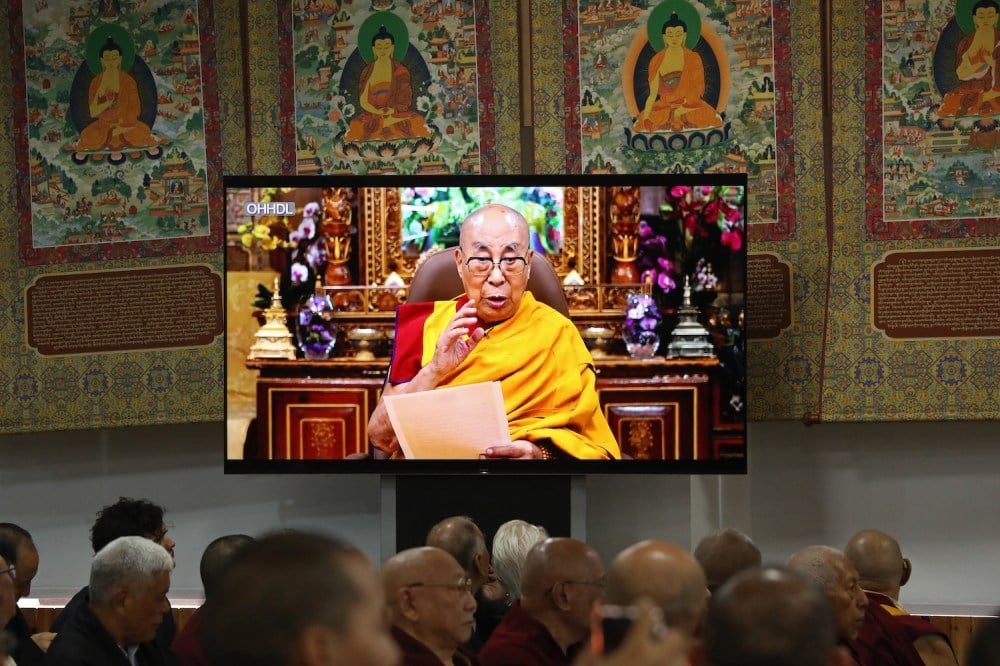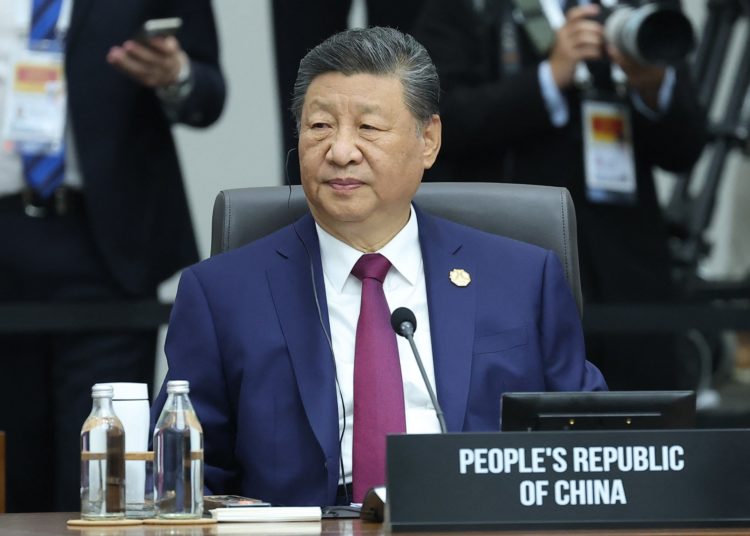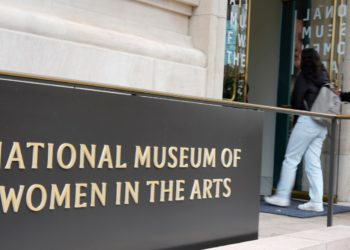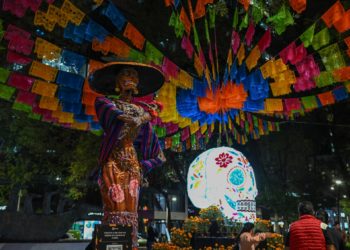The smooth election of Pope Leo XIV as the 267th pontiff reflected the careful groundwork laid by Pope Francis, who appointed 80 percent of the cardinals eligible to vote in the papal conclave—including the new pope himself. The next succession of a major religious leader is likely to be that of the 14th Dalai Lama, who turns 90 years old on July 6. It is unlikely to be as smooth.
Not since the Fifth Dalai Lama—who died in 1682, leaving behind a unified Tibetan plateau—has a succession carried such weight for the future of Tibetan identity and leadership. Today, the stakes are different but no less profound. China exercises absolute control over Tibet itself, yet one force remains beyond Beijing’s grasp: the current Dalai Lama. He lives freely in exile but still commands global reverence.
On July 2, the Dalai Lama issued a statement reaffirming that the institution of the Dalai Lama will continue after his death. He also reiterated that his 2011 statement outlines the process for recognizing his successor and that his office, the Gaden Phodrang Trust, will hold sole authority over the succession. How the Dalai Lama and his office manage this transition will be pivotal in determining whether this ancient lineage retains its spiritual legitimacy amid growing political interference—or risks fracturing under external pressure.
While the Catholic papacy traces its lineage to Saint Peter nearly 2,000 years ago, the Dalai Lama institution—established in the late 14th century —is relatively young by comparison, with the first two Dalai Lamas being awarded the title posthumously. The title itself, meaning “Ocean of Wisdom,” was bestowed on the third Dalai Lama by Mongolian ruler Altan Khan in 1578. The position operates within Tibetan Buddhism’s reincarnation tulku system, where there are different levels of rebirth and high lamas or tulkus are believed to consciously choose rebirth to continue their spiritual mission. The Dalai Lama represents the most revered of these reincarnated lineages. From the 17th century onward, successive Dalai Lamas—or their appointed regents when the lama was a minor—maintained political power in Tibet through a “patron-priest” (Cho-yon) relationship with the Mongols and subsequent Chinese dynasties through the Qing period, and succeeded in creating a distinctive theocratic system that merged absolute religious authority with temporal power.
As the spiritual leader of Tibetan Buddhists, the Dalai Lama commands unquestioned authority and deep loyalty from millions worldwide, standing as an enduring symbol of nonviolent resistance and Tibetan identity. His successor will inherit his moral and diplomatic influence, while the succession process and outcome will determine the future of Tibetan Buddhism and the Tibetan struggle for freedom and self-determination. For China, controlling this succession offers the ultimate prize: legitimizing decades of occupation by transforming Tibet’s greatest symbol of resistance into an instrument of state authority.
In his March 2025 book Voice for the Voiceless, the current Dalai Lama made two significant declarations: First, reversing earlier suggestions that the lineage might end with him, he confirmed there will be a 15th Dalai Lama “to carry on the work of the predecessor”; second, he declared that “the new Dalai Lama will be born in the free world.” This signals his intention to ensure the next Dalai Lama emerges from among Tibetan exiles or the broader Tibetan Buddhist community outside Tibet and China.
This second declaration sets the stage for a direct confrontation with China, which claims the sole right to choose the next Dalai Lama. The traditional process of recognizing a reincarnated lama involves search teams interpreting spiritual signs and performing sacred rituals to identify a child born around the time of the predecessor’s death. This elaborate process typically follows instructions left by the deceased lama, combined with consultations with oracles and senior monks, prophetic visions, and a series of tests designed to confirm the child’s authentic identity.
Chinese efforts to control the selection of the Dalai Lama and other high Tibetan religious figures stretch back to the Manchu rulers of the Qing dynasty. In 1792, the Qing court proposed that Tibetans use the “golden urn” method to select reincarnations of senior religious leaders. Under this system, candidates’ names were placed in an urn and selection occurred through drawing lots. According to the Dalai Lama’s 2011 statement, only the 11th Dalai Lama was actually recognized using this method. In 2023, the ruling Chinese Communist Party (CCP) announced that the reincarnation of the “Dalai Lamas and Panchen Rinpoches, must be looked for within the country, decided through the practice of lot-drawing from the golden urn, and receive approval from the central government.”
Any possibility of finding common ground with the Chinese leadership on the issue of succession was shattered in 1995, when China hijacked the reincarnation process of the 10th Panchen Lama, the second-ranking religious figure in Tibet. The Chinese government abducted the legitimate 11th Panchen Lama, then just 6 years old, and his family, installing a state-approved replacement. The real Panchen Lama has been missing ever since, making 2025 the 30th year of his enforced disappearance.
Following this trend, Beijing will likely appoint its own candidate as the 15th Dalai Lama and pressure both Tibetans and foreign governments to accept its choice. Just as China insists that other countries adhere to its “One China” policy regarding Taiwan, it will likely demand a “One Dalai Lama” policy—recognition of only the Chinese-appointed Dalai Lama—in its bilateral relations. China’s president, Xi Jinping, would view such an outcome as the crowning achievement in the country’s centuries-long quest to assert control and legitimacy over Tibet.
The Dalai Lama’s succession also carries significant geopolitical implications both regionally and globally. Should the 15th Dalai Lama be born in India and hold Indian citizenship, it would introduce a complex new dimension to the already strained India-China relationship. An Indian-born Dalai Lama could increase pressure on New Delhi to adopt a more openly supportive stance toward the Dalai Lama and the Tibetan people’s right to self-determination. India has long served as a host to the Dalai Lama, the Central Tibetan Administration (the Tibetan government-in-exile), and nearly 85,000 Tibetan refugees. While providing sanctuary and support, India maintains an official policy that recognizes Tibet as part of China and prohibits overtly anti-China political activities on its soil. New Delhi has remained conspicuously silent on the sensitive question of the 14th Dalai Lama’s succession.
Mongolia and Nepal—both economically dependent on China—would face immense pressure from Beijing if a reincarnation of the Dalai Lama were discovered within their borders, especially if they did not recognize the Chinese-appointed candidate. Ulaanbaatar has already experienced the consequences of defying Beijing. When the Dalai Lama visited Mongolia in 2016, China responded by closing a key border crossing and freezing bilateral diplomacy.
The United States’ Tibetan Policy and Support Act, signed by U.S. President Donald Trump during his first term, authorizes the U.S. government to “take all appropriate measures to hold accountable senior officials of the Government of the People’s Republic of China or the Chinese Communist Party” who interfere in the Dalai Lama’s succession process. If China attempts to hijack the succession, it will threaten the credibility and enforcement of U.S. law.
It is difficult to predict how the Trump administration might respond, but it could choose to reject or withhold recognition of a Chinese-appointed Dalai Lama—adding yet another layer of complexity to already tense U.S.-China relations, particularly on issues related to human rights and religious freedom.
The CCP will do everything it can to co-opt the religious and cultural identity of the Tibetan people. Now that it is clear the institution of the Dalai Lama will continue—with a 15th Dalai Lama to be born outside of Tibet—the most urgent task before the current Dalai Lama is to define the precise method of succession and implement reforms that ensure the continuity and integrity of the lineage.
The Dalai Lama may not have Pope Francis’s College of Cardinals to choose a successor from, but helpfully, the Tibetan Buddhist doctrine of reincarnation allows for considerable flexibility. There is no single, fixed mechanism for recognizing reincarnations, and enlightened beings such as the Dalai Lamas are believed to possess the agency to determine the time, place, and manner of their rebirth.
One promising path to protect the succession, and also explained in the Dalai Lama’s September 2011 statement, is the concept of “emanation”—whereby high-level bodhisattvas, enlightened beings like the Dalai Lamas, can manifest in multiple bodies simultaneously. One analogy would be a cloud-computing server running multiple applications in different locations. Under this scenario, the next Dalai Lama could be found during the current one’s lifetime. There have been notable instances of recognized emanations in recent times within the Nyingma and Sakya schools of Tibetan Buddhism. The 14th Dalai Lama could recognize a 13- or 14-year-old, transmit his wisdom, and ensure continuity in spiritual leadership. This would also resolve the long-standing issue of an interregnum—the often decades-long gap between the death of a Dalai Lama and the maturity of his recognized reincarnation.
Interregnums are often precarious; throughout Tibetan history, regents of young Dalai Lamas have faced challenges in maintaining authority. The most well-known example involved the regent who concealed the death of the Fifth Dalai Lama for 15 years even though a successor had been identified just six years later in what is now Arunachal Pradesh, India. Such gaps in leadership have historically led to factional infighting, financial mismanagement, weakened central authority, political instability, and increased vulnerability to external threats.
Another important reform for consideration is the creation of a council charged with implementing the Dalai Lama’s written instructions on succession. This body should include representatives from the four major schools of Tibetan Buddhism—Nyingma, Kagyu, Sakya, and Gelug—as well as Bon, Tibet’s indigenous, pre-Buddhist tradition. By establishing such a council and clearly outlining its mandate, the Dalai Lama would address a critical gap, as there is presently no formal mechanism to ensure that his succession guidelines are carried out, or by whom. This council should report to the Gaden Phodrang Trust. A diverse, credible council would offer both transparency and expertise for what is likely to be a complex and contested process as well as guard against mounting efforts by the CCP and Xi to co-opt this sacred tradition for political ends.
The 14th Dalai Lama stands at a pivotal moment in history, uniquely positioned to shape both his own succession and the future of an institution that carries deep spiritual and cultural significance. His legacy will not only be defined by his lifelong commitment to peace and compassion, but also by his visionary efforts to adapt ancient traditions to meet the demands of a changing world. One final, urgent responsibility remains: to proactively redefine the reincarnation process on his own terms—safeguarding it from political interference and ensuring the institution’s integrity, relevance, and spiritual legitimacy for generations to come.
The post The Dalai Lama Defies China to Announce His Reincarnation Plans appeared first on Foreign Policy.




